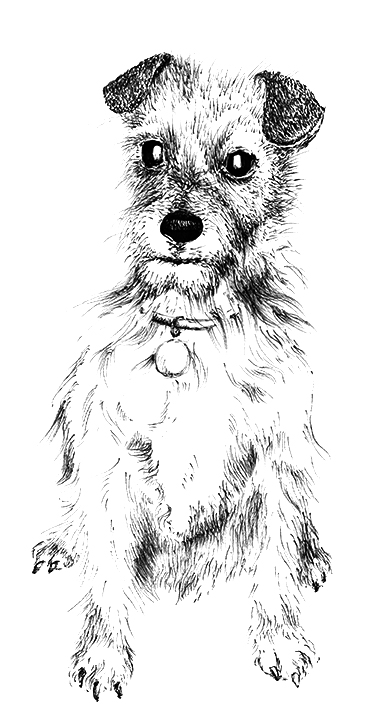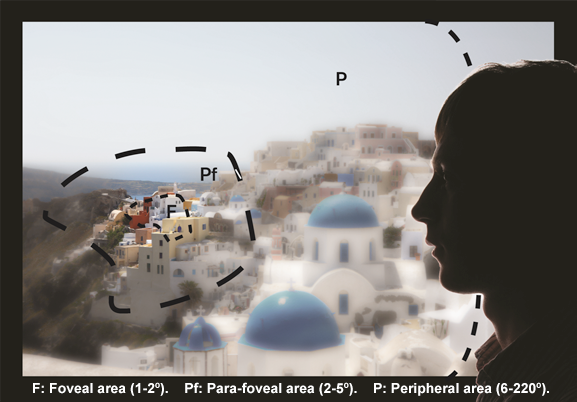We all make magic every day. Don’t think so? Then consider this, we conjure up complete worlds of information with a mere suggestion, just a bit of outline, a stroke or two, a few words, a spatter of color, a dash of melody. We literally make grand visions from just a trickle of data. This is true for those who design and those who consume information.
Let’s first explore our ability to comprehend very incomplete information. Take pointillism — an art movement (technique) that required artists to create images using points of pure color — why are we able to “see” the complete image from a mere collection of dots?

 With just a collection of colored dots, we are all able to imagine the mood, understand the story, visualize the universe behind this painting. You can say: “well, the artist was great at using dots.” But it is not just dots that we are good at. We reconstruct our reality from little bits of incomplete data all day every day of our lives. Consider the tone of voice of the person who answered the phone — you can easily tell the mood and even guess at the personality of that stranger on the other end of the line. You can look at a few lines and see a dog or flower; you can glance at the few text strokes and see the smiley face of an emoticone 😉 It’s magic!
With just a collection of colored dots, we are all able to imagine the mood, understand the story, visualize the universe behind this painting. You can say: “well, the artist was great at using dots.” But it is not just dots that we are good at. We reconstruct our reality from little bits of incomplete data all day every day of our lives. Consider the tone of voice of the person who answered the phone — you can easily tell the mood and even guess at the personality of that stranger on the other end of the line. You can look at a few lines and see a dog or flower; you can glance at the few text strokes and see the smiley face of an emoticone 😉 It’s magic!
Even our ability to see is amazing. Our eyes are physically not able to take in the full clarity of image across our entire visual fields. We only see a small clear section right in front, the rest is hazy and out of focus. And yet, we don’t even notice! We are able to construct the rest of the visual information from the blurred out details.
The image above is an illustration of how the world is actually perceived by the our eyes. And yet our brains are able to process this incomplete information to create a visual story of our environment that we find complete. We are the magicians! (read how the eye works here: The science of Eyegaze).
As the audience, we are all truly remarkable. But those of us who the designers of information are even more so. For we decide what limited brush strokes, what small collection of words, which few notes will convey the illusion of the complete universe we want our audience to imagine. We conjure up the magic!
When next time you go visit a web site or read a novel, pay attention to the difference between the paucity of data in front of you and the rich world you perceive. A great designer will be able to pick just the right data to give her audience the experience she wants. This ability to pick just the right data is very rare. We tend to recognize great art and beautiful music, but most are not as good at understanding what makes information design great. We can talk about usability and user experience, for example, but that’s just part of it. The ability to create true magic requires talent and lots and lots of experience. The experience is what enables us to understand and support cultural differences, background knowledge variations, and individual idiosyncrasies, and still create appropriate informational scaffoldings to communicate with our audiences. We the magicians control what our users perceive, believe, and experience through our creations.

